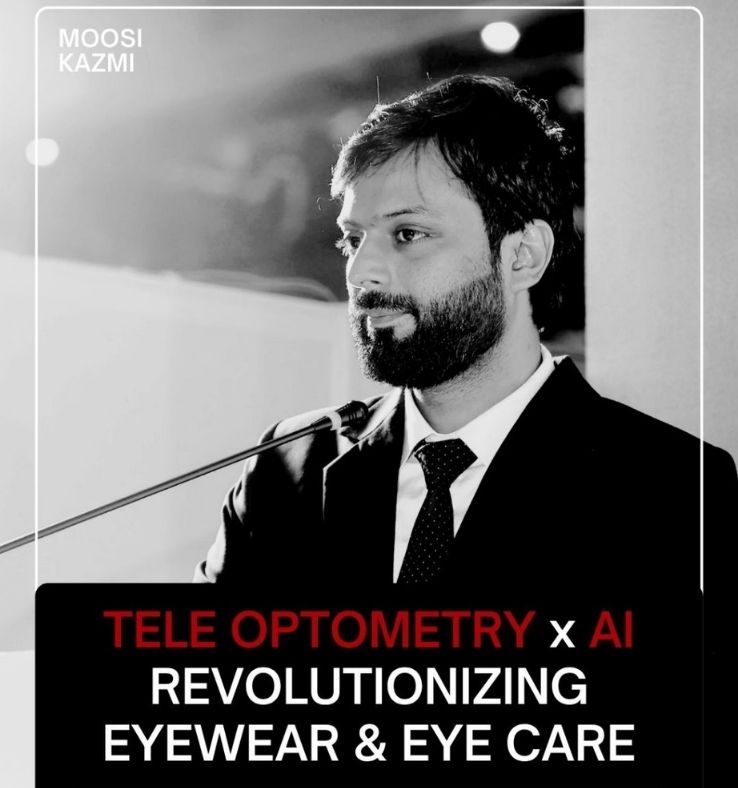Understanding Myopia: A Growing Concern in India

Over the recent years, India has witnessed a concerning rise in myopia, commonly known as nearsightedness. Myopia is an eye condition that causes distant objects to appear blurred, while the nearby objects remain clear. The prevalence of this disease has surged among children and adults, posing a significant public health issue. The prevalence of myopia has surged among both children and adults, posing a significant public health issue. The blog aims to shed light on the causes, impact, and potential preventive measures to address the growing myopia epidemic in India.
India is grappling with an enormous increase in the myopic cases across all age groups. According to studies, the prevalence of myopia has surged significantly to 66 percent alone. If controlled and correct measures are not put in place, by 2050, approximately 50 percent of the world’s population is likely to develop myopia.
Certain factors have a played a significant role in the spread of the defect and it includes:
1. Changing Lifestyles: The proliferation of electronic devices, such as smartphones, tablets, and computers, has led to increased near work activities, resulting in prolonged periods of close-up focusing. This excessive near work has been linked to the development and progression of myopia. In a recent study it has been found that epidemics in east Asian countries such as Singapore and Japan are solely due to changes in lifestyle. The prevalence of the diseases among the generation has resulted in issues of employment especially in the armed forces and police.
2. Reduced Outdoor Activities: The shift towards sedentary lifestyles, coupled with a decrease in outdoor activities, has deprived individuals, especially children, of exposure to natural light and the benefits of spending time outdoors. Studies have found a correlation between limited outdoor time and the development of myopia. Children with sedentary lifestyles were thrice more likely to develop myopia as compared to the children with active lifestyles. Weight factors have been taken into consideration as well with various studies claiming that clinically obese children are likely to develop myopic tendencies as compared to the fit children.
3. Genetic Predisposition: Myopia often has a genetic component, and individuals with myopic parents are more likely to develop the condition. India's diverse genetic pool might contribute to the higher prevalence of myopia in certain populations. From a biological point of view, genetic studies have provided some evidence that have proven to have had a significant hereditary component. If one has one or more parents with the defect, one is likely to develop the condition compared with the individuals with non-myopic parents. The risk of myopia increases further if both parents are myopic. Developmentally, several genes have been identified as a potential contributing factor to myopia development. There are some genes that have been implicated to have their association with myopia that includes: PAX6, which is a gene involved in eye development and has been linked to various eye conditions namely myopia. The transcription factor PAX6 plays a significant role in the development of the eye, and it is often regarded as the master contributor of eye development. APLP2 is another gene that is associated with the regulation of ocular growth and has been found to play a crucial role in myopic development. APLP2, is a variant gene that when found in teens has been linked to the risk of developing myopia as a child. It is crucial to note that the genetic predisposition does not guarantee that one will develop or has the tendencies to develop myopia. There are certain environmental factors.
4. Urbanization and Environmental Factors: Rapid urbanization has led to increased pollution, reduced green spaces, and limited access to natural light, which can negatively impact eye health and contribute to myopia. Researchers have also drawn conclusions that the risk of myopia was directly proportional to the amount of outdoor activity. According to the IMI, only 5% to 35% of the variation in myopia can be explained by genes, and the heritability of myopia is probably between 60% and 80%.
Consequences of Myopia:
Myopia can have significant consequences on both individual well-being and society. Some of the implications include:
1. Visual Impairment: Uncorrected myopia can severely impact an individual's ability to perform daily activities, such as reading road signs, recognizing faces, or watching television, leading to a diminished quality of life.
2. Increased Risk of Eye Diseases: High myopia, particularly in progressive cases, can increase the risk of various eye diseases, including retinal detachment, glaucoma, and macular degeneration, potentially leading to permanent vision loss.
3. Economic Burden: Myopia places a substantial economic burden on individuals, families, and healthcare systems. The cost of vision correction, eye exams, and potential treatments for associated eye conditions can be significant, straining limited resources.
Addressing the Myopia Epidemic:
To combat the growing myopia epidemic in India, concerted efforts are required from various stakeholders, including parents, educators, healthcare professionals, and policymakers. Here are some preventive measures that can be adopted:
1. Encouraging Outdoor Activities: Promoting outdoor activities and ensuring children have regular exposure to natural light can help reduce the risk of myopia development.
2. Implementing Screen Time Guidelines: Educating parents and children about the importance of limiting screen time and adopting healthy visual habits can contribute to maintaining good eye health.
3. Regular Eye Examinations: Routine eye examinations can detect myopia at an early stage and allow for timely intervention. Regular check-ups can help identify other eye conditions and address them promptly.
4. Public Awareness Campaigns: Government bodies, healthcare organizations, and educational institutions should collaborate to raise awareness about myopia, its consequences, and preventive measures through public campaigns and initiatives.

.jpg)

.jpg)
.jpg)
.jpg)


1.jpg)



.jpg)
.jpg)



_(Instagram_Post).jpg)
.jpg)
_(1080_x_1080_px).jpg)


with_UP_Cabinet_Minister_Sh_Nand_Gopal_Gupta_at_OpticsFair_demonstrating_Refraction.jpg)
with_UP_Cabinet_Minister_Sh_Nand_Gopal_Gupta_at_OpticsFair_demonstrating_Refraction_(1).jpg)

.jpg)








.jpg)



.png)




